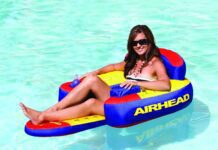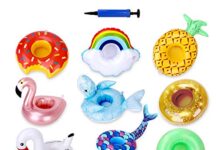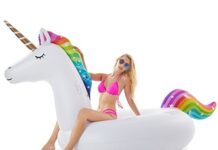In our article, we explore the world of coolers and their ability to keep your food and drinks chilled. Whether you’re heading to a picnic, a camping trip, or simply want to enjoy a refreshing beverage on a hot day, the right cooler can make all the difference. We’ll take a look at both hard and soft coolers, discussing their features, benefits, and how they can enhance your outdoor experiences. With a wide variety of options available, we’ll help you choose the perfect cooler to keep your favorite snacks and beverages at the ideal temperature.
Hard Coolers
Hard coolers are a popular choice for keeping food and drinks chilled during outings and outdoor activities. They are designed to be durable, providing a long-lasting solution for keeping perishable items cold. One of the key factors to consider when choosing a hard cooler is the material it is made from. The two main materials commonly used for hard coolers are plastic and metal, each with its own advantages and considerations.
Plastic
Plastic hard coolers are lightweight and generally more affordable than their metal counterparts. They are often made from high-density polyethylene (HDPE), which is a sturdy and durable plastic. Plastic coolers are easy to clean, and many come with convenient features such as built-in cup holders and bottle openers. However, it’s important to note that plastic coolers may not offer the same level of insulation as metal coolers.
Metal
Metal hard coolers, particularly those made from stainless steel, are known for their exceptional durability and insulation capabilities. They are built to withstand rugged outdoor use and heavy-duty conditions. Metal coolers can provide superior insulation, keeping ice and perishable items cold for an extended period. However, it’s important to consider that metal coolers tend to be heavier and more expensive than plastic coolers. Additionally, some metal coolers may not have the same convenient features as their plastic counterparts.
Insulation
The insulation of a cooler is what helps maintain a cold internal temperature, ensuring that your food and drinks stay fresh and chilled. There are two primary types of insulation commonly found in hard coolers: thermal liner and foam insulation.
Thermal Liner
Coolers with a thermal liner often have an extra layer of protection to keep the cold air inside. The thermal liner acts as a barrier, preventing warm air from entering the cooler and cold air from escaping. This feature is especially useful for maintaining the internal temperature over an extended period. Coolers with thermal liners can be more effective in keeping perishable items cold, making them a great choice for longer trips or outings.
Foam Insulation
Foam insulation is another popular type of insulation used in hard coolers. Coolers with foam insulation have a layer of foam material sandwiched between the outer and inner walls. The foam acts as an insulator, reducing the transfer of heat into the cooler and helping to maintain a cold internal temperature. Foam insulation is known for its excellent insulating properties and can keep perishable items cold for an extended period. Many high-quality hard coolers feature thick foam insulation for optimal temperature retention.
Capacity
The capacity of a cooler refers to its storage volume and is an important consideration when choosing the right cooler for your needs. Cooler capacity is typically measured in quarts and can range from small personal coolers to large coolers suitable for group outings or extended trips.
Quart Size
Coolers are available in a variety of quart sizes, allowing you to choose one that suits your specific needs. Smaller coolers, such as those with a capacity of 20-30 quarts, are ideal for personal use or shorter outings. They are compact and easy to carry, making them a popular choice for picnics or day trips. Larger coolers, ranging from 40-100+ quarts, offer increased storage space, making them suitable for camping trips, beach parties, or tailgating. It’s important to consider the amount of food and drinks you plan to bring when selecting the appropriate quart size for your cooler.
Storage Space
In addition to the quart size, the layout and design of the cooler can also affect its storage space. Some coolers come with built-in dividers or compartments, allowing you to organize and separate items for convenience. Others have removable baskets or trays, providing additional storage options and helping to keep items organized. When considering capacity, it’s essential to think about both the overall quart size and the internal organization features that may enhance the storage space and functionality of the cooler.
Durability
Durability is a crucial factor to consider when investing in a hard cooler. Outdoor activities often involve rough handling and exposure to various elements, so choosing a durable cooler will ensure that it can withstand the demands of your adventures. When assessing the durability of a hard cooler, two main aspects to consider are construction quality and handle and lid strength.
Construction
A well-constructed cooler is built to withstand heavy use and harsh conditions. Look for coolers made from high-quality materials and featuring solid construction. Reinforced corners, thick walls, and a robust locking mechanism can contribute to the overall durability of the cooler. Pay attention to the overall craftsmanship of the cooler and ensure that it feels sturdy and reliable.
Handle and Lid Strength
The handle and lid of a cooler need to be strong and secure to withstand the weight of the cooler and its contents. Coolers with sturdy handles make it easier to transport them from one place to another. Look for handles that are comfortable to grip and have a secure attachment to the cooler. Additionally, the lid should have a tight seal to prevent warm air from entering the cooler and cold air from escaping. A strong and reliable lid will help maintain the desired internal temperature and keep your perishable items fresh.
Portability
Portability is a key consideration when choosing a hard cooler, especially if you plan to use it for outdoor activities such as camping or hiking. The size and weight of the cooler, as well as the handles and straps, play a significant role in determining its portability.
Size and Weight
The size and weight of a cooler can impact how easy it is to transport. Smaller, lightweight coolers are generally more portable and easier to carry for extended periods. They are also easier to fit into vehicles or carry on hikes. However, it is essential to strike a balance between portability and capacity, ensuring that the cooler is large enough to accommodate your needs while still being manageable to carry.
Handles and Straps
Coolers with comfortable and sturdy handles or straps make transportation much easier. Look for coolers that have ergonomic handles with a firm grip, as they will be more comfortable to carry, especially when the cooler is fully loaded. Some coolers also feature additional straps or shoulder straps, allowing for hands-free transportation. Adjustable and padded straps can provide added comfort during longer journeys. When considering portability, think about how you will be carrying the cooler and choose a model that offers the most convenience for your specific needs.
Soft Coolers
Soft coolers offer a lightweight and convenient alternative to hard coolers. They are made from flexible materials such as nylon or polyester and are designed to be collapsible and easy to store when not in use. Soft coolers are particularly popular for day trips, picnics, or sports events.
Material
Soft coolers are typically made from nylon or polyester, both of which offer durability and water resistance. Nylon is known for its strength and tear resistance, making it a popular choice for rugged outdoor use. Polyester is another durable fabric that can withstand rough handling and exposure to the elements. Both materials are easy to clean and maintain, making them suitable for outdoor use.
Insulation
Soft coolers use different types of insulation to keep your food and drinks chilled. The two main types of insulation commonly found in soft coolers are closed-cell foam and gel packs.
Closed-cell Foam
Closed-cell foam insulation is lightweight and helps retain the cold air inside the cooler. The foam acts as a barrier, preventing warm air from entering and cold air from escaping. Closed-cell foam is known for its insulating properties, making it effective in keeping perishable items cold for several hours. Soft coolers with closed-cell foam insulation are an excellent choice for short trips or outings where immediate access to cold food and drinks is required.
Gel Packs
Some soft coolers include gel packs as a form of insulation. Gel packs are specifically designed to keep items cold and can be placed in the freezer prior to use. They work by maintaining a low temperature and gradually cooling the contents of the cooler. Gel packs are a convenient option for occasions when access to a freezer or ice may be limited. They are also useful for keeping perishable items fresh during transportation.
Convenience
Convenience is a crucial factor to consider when selecting a soft cooler. Soft coolers are designed to be easy to use and offer various features that can enhance their convenience.
Easy Access
Soft coolers typically have wide-mouth openings or zippered tops, allowing for easy access to the contents. This feature ensures that you can quickly retrieve items without having to rummage through the cooler. It’s important to choose a soft cooler with a design that suits your preferences and allows you to access your food and drinks conveniently.
Additional Storage
Some soft coolers come with additional storage compartments or pockets, providing extra space for non-perishable items. These compartments can be used to store utensils, napkins, or other small essentials, making them easily accessible when needed. Soft coolers with additional storage options offer increased convenience and allow you to keep all your essentials in one place.
In conclusion, both hard coolers and soft coolers have their own unique features and advantages. Hard coolers offer durability, superior insulation, and ample storage space, making them suitable for extended trips or outings. On the other hand, soft coolers provide convenience, portability, and lightweight design, making them ideal for day trips or picnics. Consider your specific needs and preferences when choosing between hard and soft coolers to find the perfect solution for keeping your food and drinks chilled during your outdoor adventures.



































